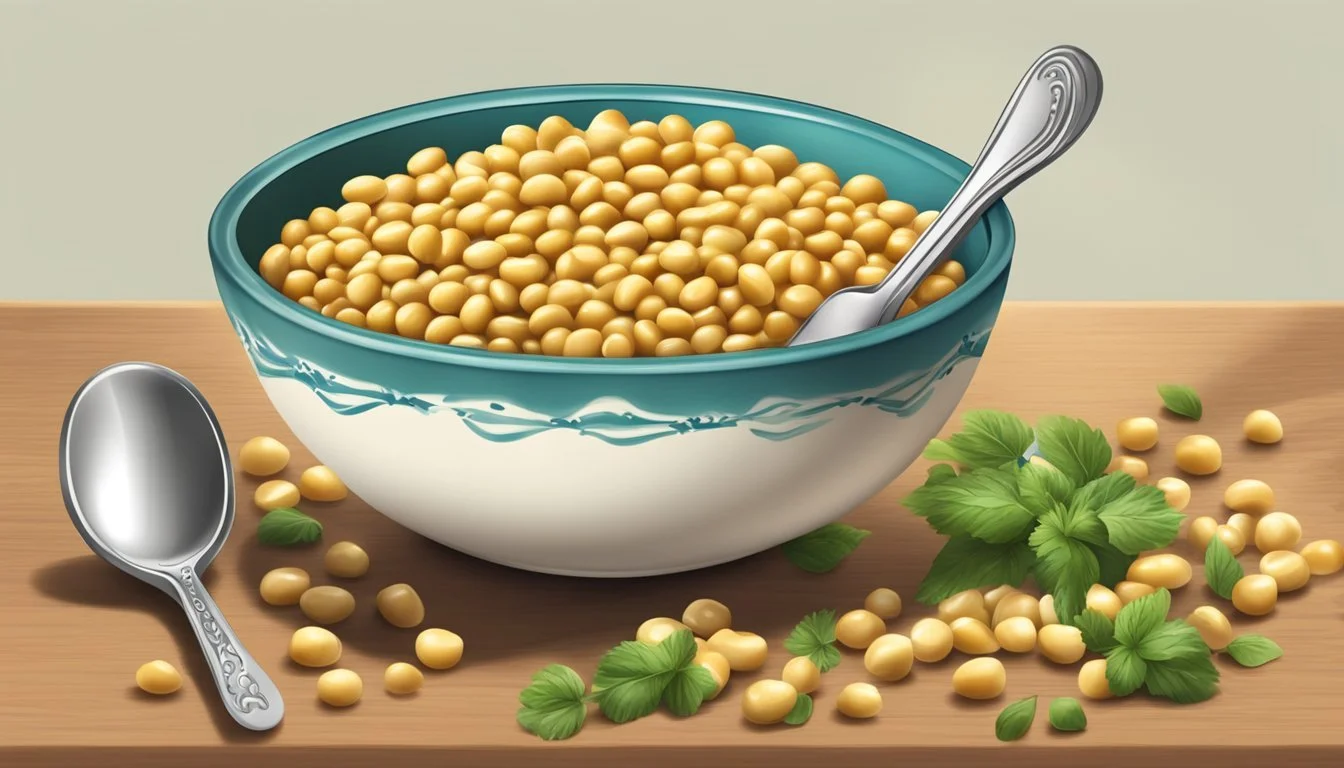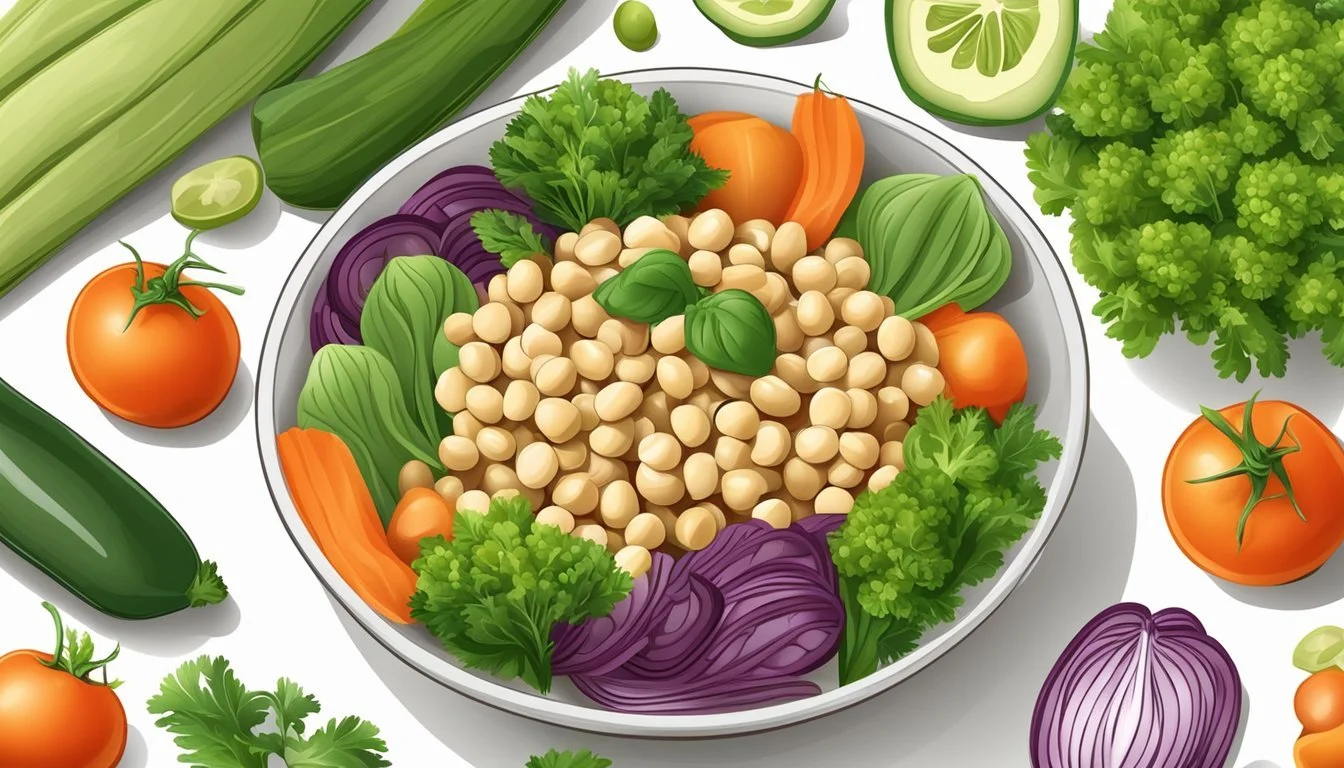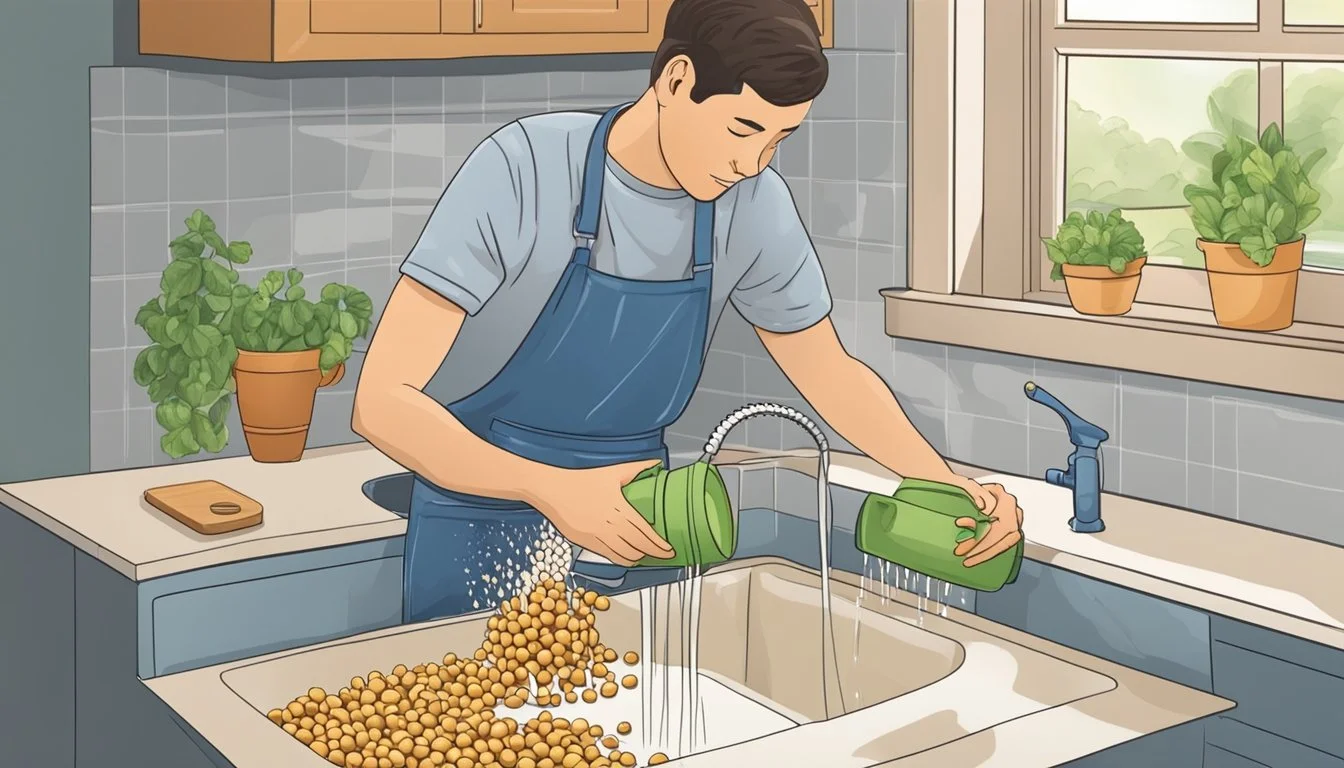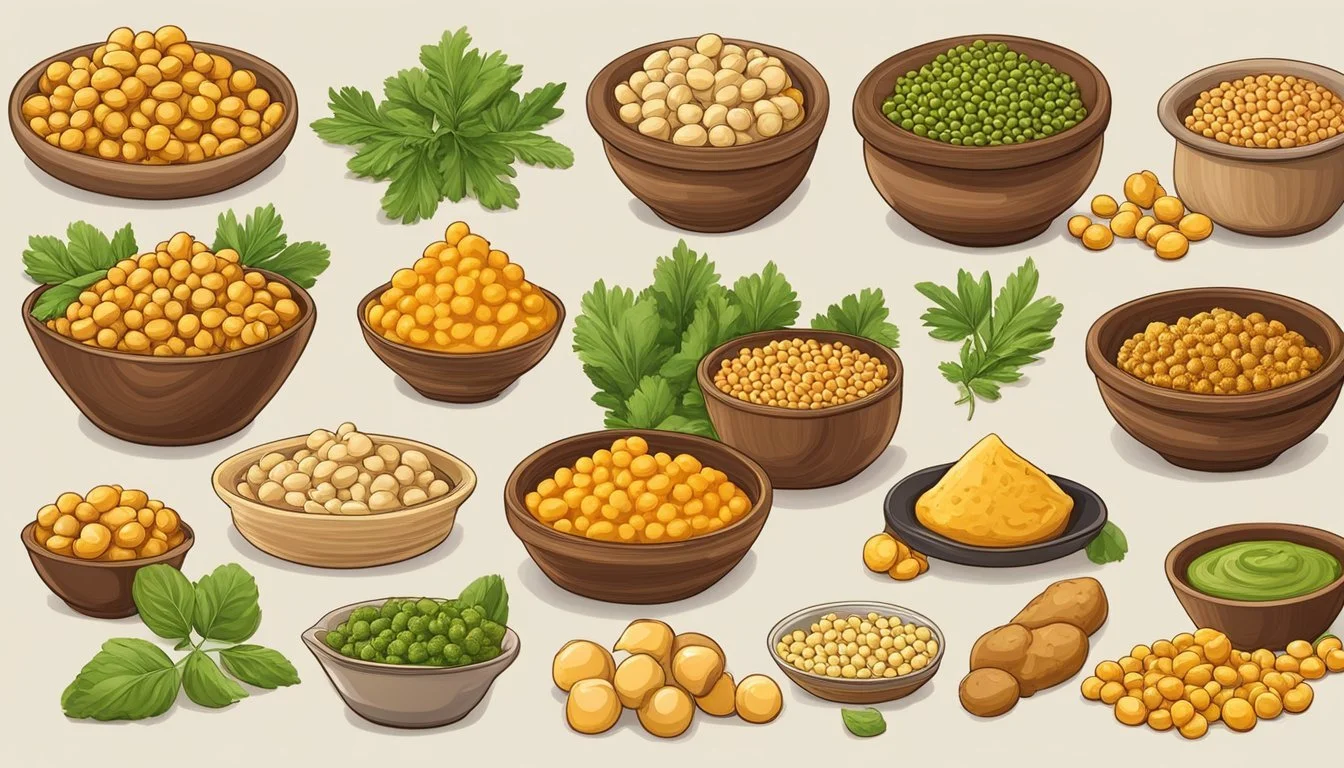How Do You Eat Garbanzo Beans?
A Guide to Enjoying This Versatile Legume
Garbanzo beans, also known as chickpeas, offer a versatile and nutritious addition to any diet, rich in protein and fiber. These legumes are a staple in vegetarian and vegan diets due to their high nutrient content, serving as a valuable source of essential amino acids that are often sought after in plant-based nutrition. They're not just a healthy choice; their nutty flavor and satisfaction factor make them a popular choice for a variety of dishes around the world.
The consumption of garbanzo beans can be as simple as adding them to salads for a protein boost or incorporating them into soups for a heartier meal. They can be ground into flour, mashed for patties, or pureed to make hummus, demonstrating their culinary flexibility. Roasting garbanzo beans transforms them into a crispy, savory snack that can be seasoned in countless ways, offering a healthier alternative to traditional snack foods.
When cooked properly, these beans become soft and creamy, making them an excellent ingredient in stews and curries, where they can absorb the flavors of the dish. Garbanzo beans support health-conscious diets and cater to those looking to increase their intake of plant-based foods. Whether used in traditional Middle Eastern cuisines or modern Western dishes, garbanzo beans continue to be a beloved ingredient for their flavor, nutrition, and adaptability.
Nutritional Profile
Chickpeas, also known as garbanzo beans, are a nutrient-dense food that offer a variety of health benefits due to their rich protein content, fiber, vitamins, and minerals. They are an excellent choice for maintaining a balanced diet.
Protein Content in Chickpeas
Chickpeas provide a substantial amount of protein, essential for muscle repair and growth. A single cup of cooked chickpeas contains about 15 grams of protein, making them a popular choice for vegetarians and vegans seeking protein-rich food sources.
Fiber and Carbohydrate Benefits
16% of the daily value of fiber is found in a half-cup serving of chickpeas. They offer a blend of soluble and insoluble fiber, which aids digestion and has been associated with heart health. The carbohydrates in chickpeas are complex, providing a steady release of energy without spiking blood sugar levels.
Vitamins and Minerals
Chickpeas are loaded with essential nutrients, including:
Folate: One cup of cooked chickpeas contains about 282 micrograms of folate, necessary for DNA synthesis and repair.
Iron: Important for transporting oxygen in the blood, and chickpeas provide a good source for those on a plant-based diet.
Phosphorus: Aids in the formation of bones and teeth and is important for the body's energy metabolism.
Magnesium: It plays a critical role in over 300 enzymatic reactions in the human body, including the metabolism of food and synthesis of fatty acids and proteins.
Potassium: A heart-healthy mineral that helps manage blood pressure levels.
Saturated Fat and Cholesterol Review
Chickpeas contain minimal saturated fat and are cholesterol-free, contributing to their status as a heart-healthy food. Their nutritional profile supports cardiovascular health and aligns with dietary recommendations for reducing the risk of chronic diseases.
Preparation and Cooking Techniques
When working with garbanzo beans, also known as chickpeas, they first need to be prepared appropriately depending on whether they're dried or canned. The cooking method can vary from stovetop to pressure or slow cookers.
Soaking and Cooking Dried Chickpeas
To ensure that dried chickpeas cook evenly, they should be soaked prior to cooking. The traditional soak involves covering the chickpeas with water by several inches and leaving them to soak overnight for about 8 to 12 hours. Once soaked, they should be drained and rinsed before cooking. On the stovetop, soaked chickpeas are placed in a pot, covered with water, and brought to a boil. They are then simmered until tender, which typically takes around 1 to 2 hours.
A quick soak method is an alternative for those short on time. Chickpeas are added to a pot with water and brought to a boil for one minute. They are then removed from heat and allowed to soak for an hour. This method can reduce the soaking time significantly.
Using Canned Chickpeas
Canned chickpeas present a convenient option as they are pre-cooked and ready to use. They should be thoroughly rinsed under cold water to remove excess sodium and any preservatives. After rinsing, canned chickpeas can be used immediately in various dishes from salads to sautés.
Pressure Cooker and Slow Cooker Methods
Pressure cookers and slow cookers provide two more methods for cooking garbanzo beans. A pressure cooker can cook soaked chickpeas in about 20 minutes. When using a pressure cooker, it's essential to follow the manufacturer's guidelines for optimal safety and results.
Conversely, a slow cooker is a set-it-and-forget-it method. Soaked chickpeas can be added to a slow cooker with water and left to cook on a high setting for 3 to 4 hours or on low for 6 to 8 hours. Both methods allow for a hands-off approach while ensuring chickpeas turn out soft and creamy. Some cooks suggest adding a small amount of baking soda to the slow cooker to improve the chickpeas' texture.
Serving Recommendations
Garbanzo beans, also known as chickpeas, offer a versatile and nutritious addition to a variety of dishes. They provide not only a generous amount of protein but also a satisfying texture and mild taste that pairs well with numerous flavors and ingredients.
Salads and Soups
In salads, garbanzo beans add a protein-packed crunch. They blend seamlessly with greens such as romaine or spinach, and are delicious when tossed with a vinaigrette made from olive oil and lemon. For a robust chickpea salad sandwich, mash garbanzo beans and mix with fresh herbs (how long do fresh herbs last?) and a touch of mayonnaise or Greek yogurt. As for soups, their hearty nature makes them an excellent thickening agent. Whether it's a comforting tomato-based minestrone or a cold gazpacho, garbanzo beans contribute both substance and nutrition.
Hummus and Dips
Hummus is a classic and beloved use of garbanzo beans. Puree the beans until smooth with tahini, garlic, olive oil, and lemon juice, adjusting these ingredients to achieve the desired taste and consistency. Garbanzo beans can also be the base for a variety of dips. Their neutral flavor allows them to take on the taste of accompanying seasonings, from spicy cumin to fragrant coriander, creating a perfect complement for pita bread or vegetable crudités.
Stews and Curries
In stews and curries, garbanzo beans contribute texture and heartiness. They absorb the flavors of the dish, making them a staple in many cultural cuisines. From a Moroccan tagine with a hint of cinnamon to an Indian chana masala with garam masala spices, garbanzo beans enrich these dishes with their protein content and satisfying mouthfeel.
Sandwiches and Tacos
Garbanzo beans are also a filling addition to sandwiches and tacos. For sandwiches, they can be blended into a spread or added whole for additional texture. In tacos, they provide a substantial meat-free option when mixed with ingredients like corn, salsa, and avocado. Whether mashed or left whole, garbanzo beans can be seasoned with anything from taco spices to zesty lime to elevate the flavors of the dishes.
Creative Chickpea Recipes
Chickpeas, versatile and nutritious, offer endless possibilities in the kitchen, with options ranging from hearty vegan entrees to light, flavorful sides. They lend themselves to a variety of creative recipes that cater to different diets and tastes.
Falafel and Other Vegan Specialties
Falafel, a beloved Middle Eastern dish, traditionally features spiced chickpea balls that are deep-fried to golden perfection. They serve as a protein-packed staple of the vegan diet when wrapped in pita bread with fresh vegetables and tahini sauce. Beyond falafel, chickpeas are the backbone of numerous vegan recipes, including creamy hummus and hearty chickpea stews, offering satisfying options to those following plant-based diets.
Falafel: Pulse chickpeas with garlic, onion, herbs, and spices, then shape into balls or patties and fry.
Vegan Chickpea Stew: Sauté onions and garlic, add chickpeas, and simmer with tomatoes and spices.
Chickpea Snacks and Sides
Roasted chickpeas emerge as a nutritious and customizable snack; they can be seasoned to suit any palate and make a crunchy alternative to less healthy options. Moreover, chickpea salads combined with ingredients like lemon juice and fresh herbs make for a refreshing side dish.
Roasted Chickpeas: Toss chickpeas with olive oil and your choice of spices, then roast until crispy.
Chickpea Salad: Combine chickpeas with diced vegetables, a vinaigrette, and seasonings for a quick side.
Innovative Chickpea Dishes
Chickpeas bring innovation to the table with their ability to morph into unique dishes such as chickpea tacos and even cookie dough. These healthier alternatives maintain taste without sacrificing nutritional value. Chickpea tacos, loaded with spices and vegetables, offer a fresh take on the classic Mexican staple, while chickpea-based cookie dough provides a protein-rich, edible and egg-free version of the nostalgic treat.
Chickpea Tacos: Use seasoned chickpeas as a taco filling, topped with avocado and salsa.
Chickpea Cookie Dough: Blend chickpeas with sweeteners and mix-ins for a guilt-free dessert.
Purchasing and Storage
When it comes to garbanzo beans, also known as chickpeas, purchasing quality products and proper storage methods are crucial for maintaining freshness and nutritional value.
Selecting Quality Chickpeas
Dried beans: At stores or farmers markets, one should look for dried chickpeas that are whole and not cracked. Ensuring there are no stones or debris mingled with the beans is essential. The beans should have a uniform color, and they should not possess any moisture, which can encourage mold growth.
Canned beans: For canned chickpeas, check that the cans are not dented, rusted, or swollen, which can be indicators of compromised integrity. Read the label to avoid unnecessary additives.
Green chickpeas: Fresh chickpeas, when available at farmers markets, should be bright green with plump pods that contain firm beans inside.
Storing Dried versus Canned Chickpeas
Dried chickpeas storage:
Container: Use an airtight container such as a jar or sealable plastic bag for storage.
Location: Store in a cool, dry place away from direct sunlight, like a pantry.
Shelf life: Best if used within 1 year for optimal quality.
Canned chickpeas storage:
Unopened: Keep canned chickpeas in a cool, dry place and consume by the best-by date.
Opened: Transfer any unused chickpeas to an airtight container, refrigerate, and use within 3 to 4 days.
Health Considerations
When incorporating garbanzo beans into one's diet, it is important to consider their nutritional impact, especially regarding sodium, dietary restrictions, allergies, and oligosaccharides.
Sodium: Garbanzo beans can be purchased either dry or canned. The canned variety often contains added sodium, which can be a concern for individuals monitoring their sodium intake. For a lower sodium option, one can opt for either reduced-sodium canned beans or dry beans that have been soaked and cooked without added salt.
Dietary Restrictions: For those with specific dietary restrictions, garbanzo beans are a versatile choice. They are naturally gluten-free and suitable for a vegetarian or vegan diet. Additionally, they're a great protein source for those on a plant-based diet. However, they should be consumed in moderation within a low-carb diet due to their carbohydrate content.
Allergies: While not among the most common allergens, some individuals may experience allergic reactions to garbanzo beans. Symptoms can include gastrointestinal distress, hives, or more severe reactions akin to other food allergies. Those with a known legume allergy should exercise caution.
Oligosaccharides: Garbanzo beans contain oligosaccharides, which are complex sugars that can be difficult to digest for some people. They may cause gastrointestinal issues, such as bloating and gas. This can be mitigated somewhat by thoroughly rinsing canned beans or by cooking and soaking dried beans, which aids in reducing these sugars.
It is recommended to consult a healthcare provider to discuss how garbanzo beans fit into one's specific health plan, particularly for those managing health conditions or food sensitivities.
Economic and Environmental Impact
Garbanzo beans, also known as chickpeas, represent a cornerstone in the realm of whole foods, revered for their versatility and nutritional value. Economically, they serve as a cost-effective staple in many diets around the globe. Given their affordability compared to animal proteins, garbanzo beans offer an economical source of plant-based protein that can satisfy the dietary requirements of various populations economically.
Furthermore, from an environmental perspective, legumes like garbanzo beans are lauded for their sustainability. They possess a unique ability to fix nitrogen in the soil, which reduces the need for synthetic fertilizers, thus mitigating environmental pollution and enhancing soil health.
Cultivation and Consumption:
Less water usage: Compared to other proteins, garbanzo beans require relatively less water to cultivate.
Reduced greenhouse gases: They contribute to lower greenhouse gas emissions during their growth cycle.
Economic Viability:
Farmers' resilience: The hardiness of chickpeas helps farmers mitigate financial risks associated with droughts or poor weather conditions.
Market adaptability: The global demand for plant-based proteins has seen a surge, positioning garbanzo beans as a profitable crop for farmers and sellers alike.
Challenges:
Climate Change: Rising temperatures and water scarcity pose threats to garbanzo bean production, suggesting a need for ongoing research into more resilient crop varieties.
By prioritizing the growth and consumption of garbanzo beans, both economic stability and environmental sustainability can be fostered. They stand out as a cheaper and environmentally mindful choice in both agricultural production and as a dietary staple, underpinning their importance in global food systems.
Cultural and Regional Variations
Garbanzo beans, also known as chickpeas, are a global culinary staple with diverse applications stemming from traditional dishes to modern fusions. This section explores the rich tapestry of culinary traditions that have shaped the use of garbanzo beans across the world, highlighting both classic recipes and innovative adaptations.
Traditional Dishes Around the World
In India, garbanzo beans are a cornerstone of the cuisine. They are the primary ingredient in chole, a spicy curry that is a part of the nation's culinary heritage. In addition to chole, garbanzos are often used in salads, snacks, and as flour (besan) for various dishes. Chefs frequently employ spices like turmeric, garam masala, and cumin to enhance their nutty flavor.
Middle Eastern cuisine celebrates garbanzo beans through iconic dishes such as hummus and falafel. These preparations are deeply rooted in the region's culture and are a testament to the bean's versatility. The chickpeas are blended into a smooth, creamy paste for hummus, often garnished with olive oil, paprika, and parsley, while for falafel, they are ground and formed into patties or balls, then deep-fried to a golden crisp.
Contemporary Fusion and Trends
Western adaptations of garbanzo beans reflect a creative and health-conscious approach. They're a popular alternative protein source in vegetarian and vegan diets, showcasing their versatility from salad toppings to meat substitutes like veggie burgers. Chefs and food enthusiasts are creating unique dishes that bridge cultural boundaries, such as using garbanzo beans in place of traditional starches in pastas and rice dishes.
The beans' cultural significance is evident as they continue to be a featured ingredient in culinary festivals and cooking shows, often celebrated for their nutritional benefits and flavor. Innovative uses in gluten-free baking or as the base for dairy-free aquafaba – the viscous water in which chickpeas have been cooked – further demonstrate the adaptability of garbanzo beans in contemporary cuisine.






